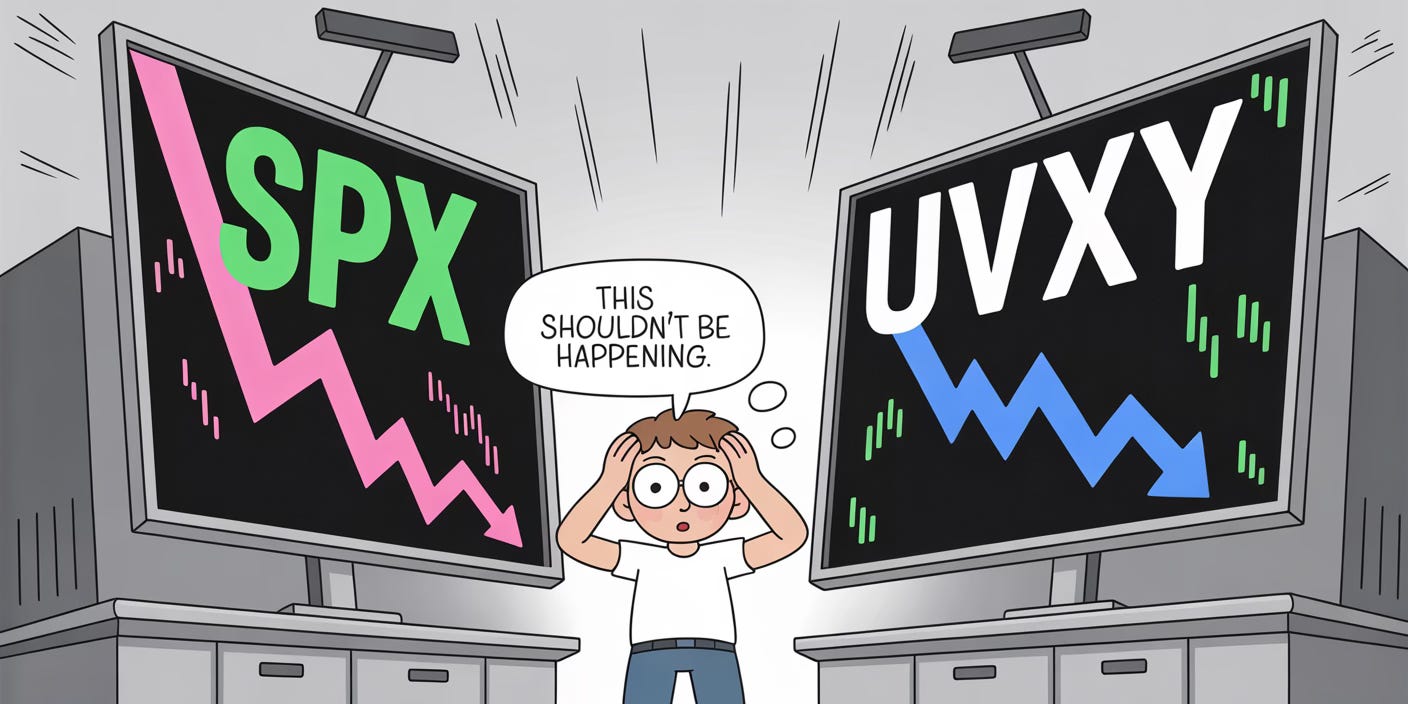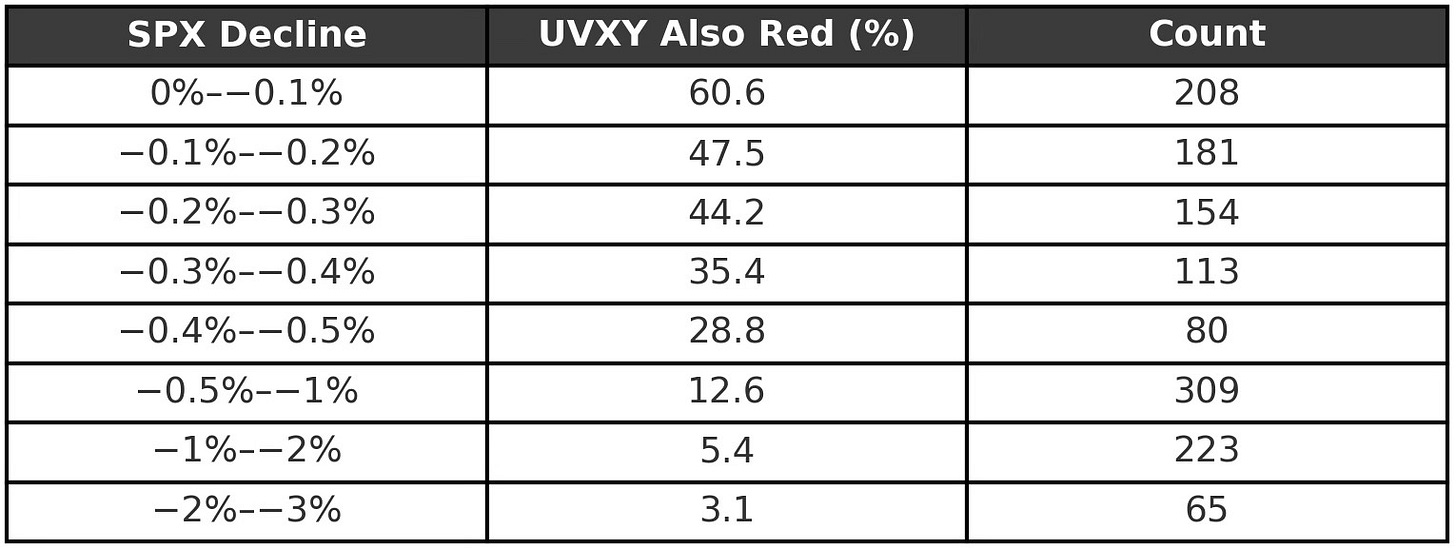If you’re new to volatility trading, you’ve probably noticed something strange:
sometimes the S&P 500 (SPX) closes lower and yet UVXY, which is supposed to rise when volatility increases, also ends the day down.
At first glance, that seems impossible. But as the data shows, it’s actually quite common.
The Misconception
Most traders assume:
“When stocks fall, volatility rises so UVXY must go up.”
In reality, UVXY doesn’t track the stock market directly. It follows short-term VIX futures, which represent traders’ expectations of volatility 30 days ahead, not the volatility happening today.
So while the S&P can be red, if the market’s decline is small volatility may actually calm down, not rise.
How Often It Happens
A full historical study of SPX and UVXY daily closes shows that UVXY finishes red about 29% of the time when SPX is also red.
But the relationship depends heavily on how big the market drop is.
Based on close-to-close daily changes:
On tiny market dips (<0.2%), UVXY actually falls most of the time: 6 out of 10 days.
When SPX drops between 0.3% and 0.5%, UVXY still fails about one-third of the time.
Once SPX falls more than 1%, UVXY almost always rises because the move is finally large enough to shake volatility expectations.
Why This Happens
UVXY Tracks VIX Futures, Not the VIX Index Itself
Even if the VIX rises slightly, the VIX futures might not especially when they’re already priced for fear. UVXY follows those futures.Contango and Daily Decay
When volatility is calm, the VIX futures curve sits in contango meaning each day UVXY loses a little value as it rolls from cheaper to more expensive contracts.Expected vs. Unexpected Declines
If traders already expect volatility (say, before CPI or Fed meetings), the actual decline in SPX doesn’t shock anyone and volatility can even drop.
The Lesson for New Traders
Don’t assume UVXY is a perfect hedge for every market dip.
It’s designed to explode only during real fear events, not every time the S&P slips a few points.
If you buy UVXY every time SPX turns red, you’ll likely lose money.
To Summarize
Small SPX declines often come with falling volatility, not rising.
UVXY finishes red on nearly half of mild down days (<0.2%).
UVXY only reliably rises when the S&P falls more than about 1%.
UVXY tracks futures expectations, not real-time market fear.



